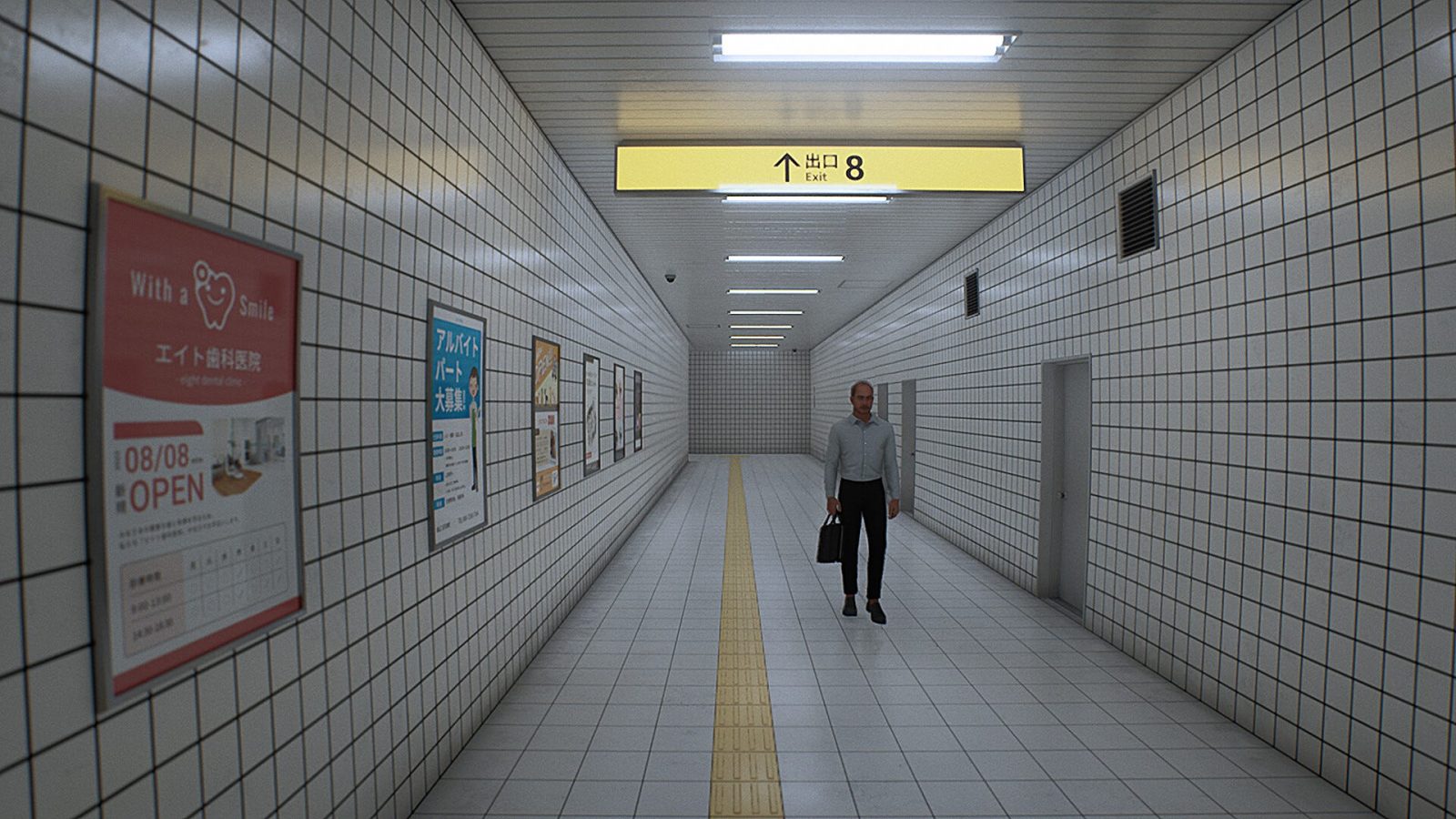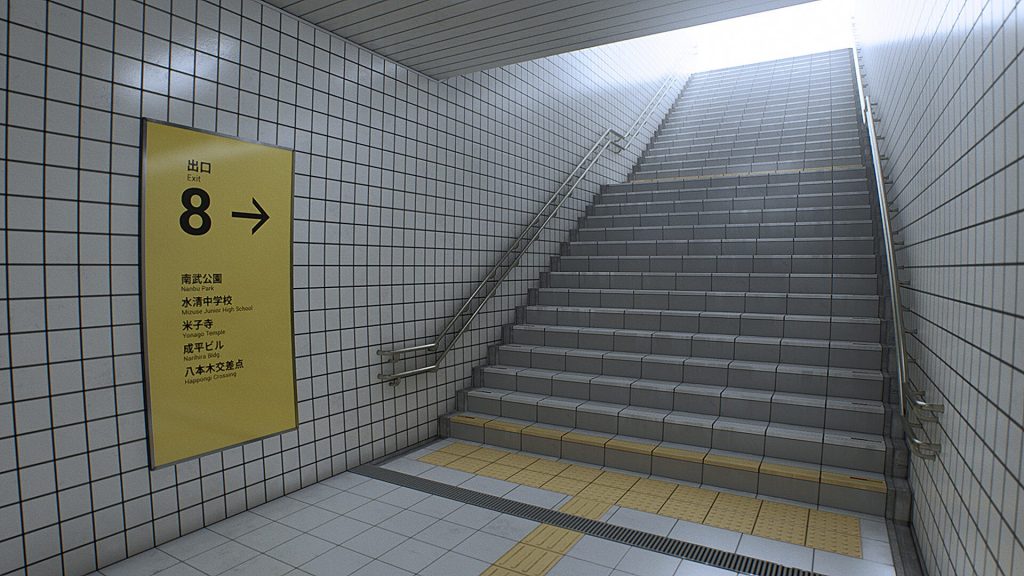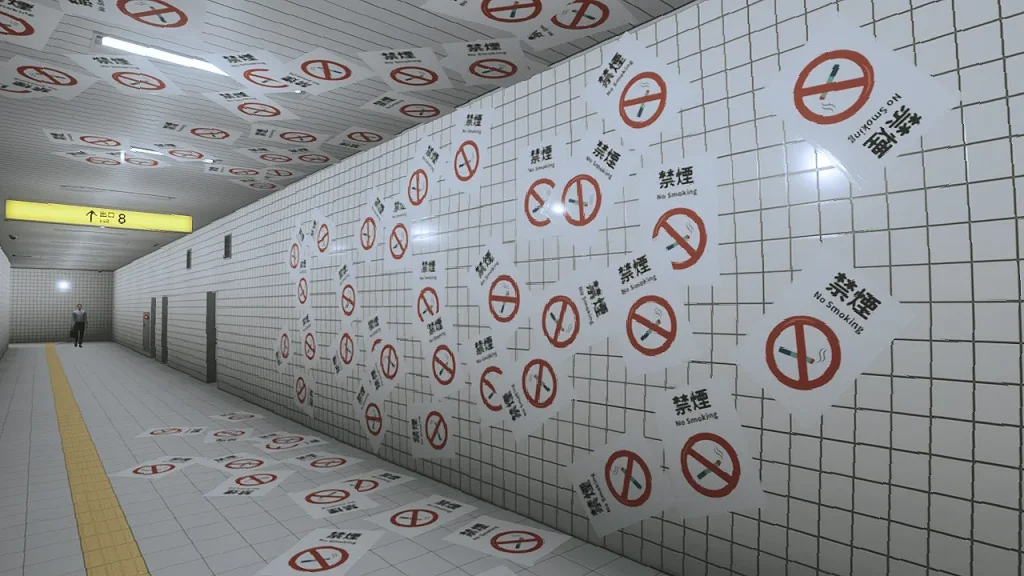The Exit 8 VR review: a Kafkaesque join-the-dots nightmare

The horror of repetition, or the terror of change? Developer Kotake Create’s eerie indie game The Exit 8, which premiered on Steam in 2023 and has now been ported into VR, is a time-looping Kafkaesque nightmare about experiencing the same quotidian elements, again and again, until suddenly things are subtly or shockingly different. It’s based in an underground Japanese train station, where one pristinely clean hallway leads into another, identical or nearly identical hallway, the objective being to navigate your way outside via the titular exit.
This isn’t achieved using a map or any kind of navigation per se. The player must decide whether the hallway they’re in is exactly the same as the first one, which serves as a kind of root reality to which all others are compared. Sometimes it is and sometimes it isn’t; if you choose correctly eight times in a row, you’ll win.

Developer: MyDearest Inc., KOTAKE CREATE
Release date: July 11, 2024
Available on: Quest headsets
Experienced on: Meta Quest 3
The journey really is the destination in this short but memorable experience, which has been billed as a “walking simulator” but is more like an embodied version of spot the difference puzzles—those pictures many of us observed as children, that seem the same at first blush but contain numerous small differences.
Shortly after beginning, you’ll walk past a sign on a wall containing the game’s only instructions: “Make sure not to overlook any anomalies. If you find any anomalies, turn back immediately. If you don’t find any anomalies, keep going.” I hadn’t played The Exit 8 before it arrived on Meta Quest headsets, but it seemed obvious that VR was the best home for it. For obvious reasons: embodying and immersing us in this environment, amplifying our sense of being stranded somewhere outside time, and enabling us to feel uncomfortably close to simple but crucial elements such as signs, doors and one man in a suit you’ll be seeing a great deal of.
It doesn’t take long to grasp that what the sign calls “anomalies” is another way of saying “differences.” Displaying the instructions in such a way is a good example of gameplay information presented diegetically, without breaking the internal reality of the experience.

The intentional ambiguity of these instructions enhances the mystery by fuelling a feeling that we may be looking in the wrong places, or investigating the irrelevant. We may wonder: do anomalies include those that can be heard but not seen? The sound design had me listening for variations in footsteps, echoes and the soft noise of dripping water; as it turned out, this was unnecessary as no anomalies, to the best of my knowledge, are purely sound-based.
There were times when I examined advertisements on the hallway’s left wall very closely, taking note of the prices of things and business opening hours. Which also turned out to be unnecessary: a small number of anomalies were poster-related but not that granular. When I was busy looking at the fine details, I missed larger and more telling ones. Occasionally they’re as dramatic as that iconic shot from The Shining of a river of blood pouring out of an elevator—in fact this image is repeated, more or less, when a sea of red floods the hallways. There’s at least one other Shining-esque flourish: a vision of two identical men in business suits standing in the middle of the hallway, recalling the iconic twin girls who famously asked to be played with “forever, and ever, and ever…”
The most frustrating aspect of The Exit 8 isn’t re-entering the same spaces, again and again, as if the temporal flow of the universe is glitching; this is a core feature of the experience. It’s not knowing why you got it wrong. On many occasions I thought OK, there’s nothing different about this hallway, no siree, nuh-uh, only for the game to disagree. More than once the thought entered my mind that maybe the game was wrong.
The subway setting is creepy, but the horror is less about where than when. Or perhaps the absence of a when: that breaking down of the flow of time, and the once-immutable laws of cause and effect. This setting has one foot in everyday experience, the realm of the commoners and the commuters, and another outside human experience altogether—a paradoxical combination of ordinary and extraordinary. The current era of VR is awash with short experiences built around a central gimmick, but this is one of the more memorable ones, executed with unsettling simplicity.

